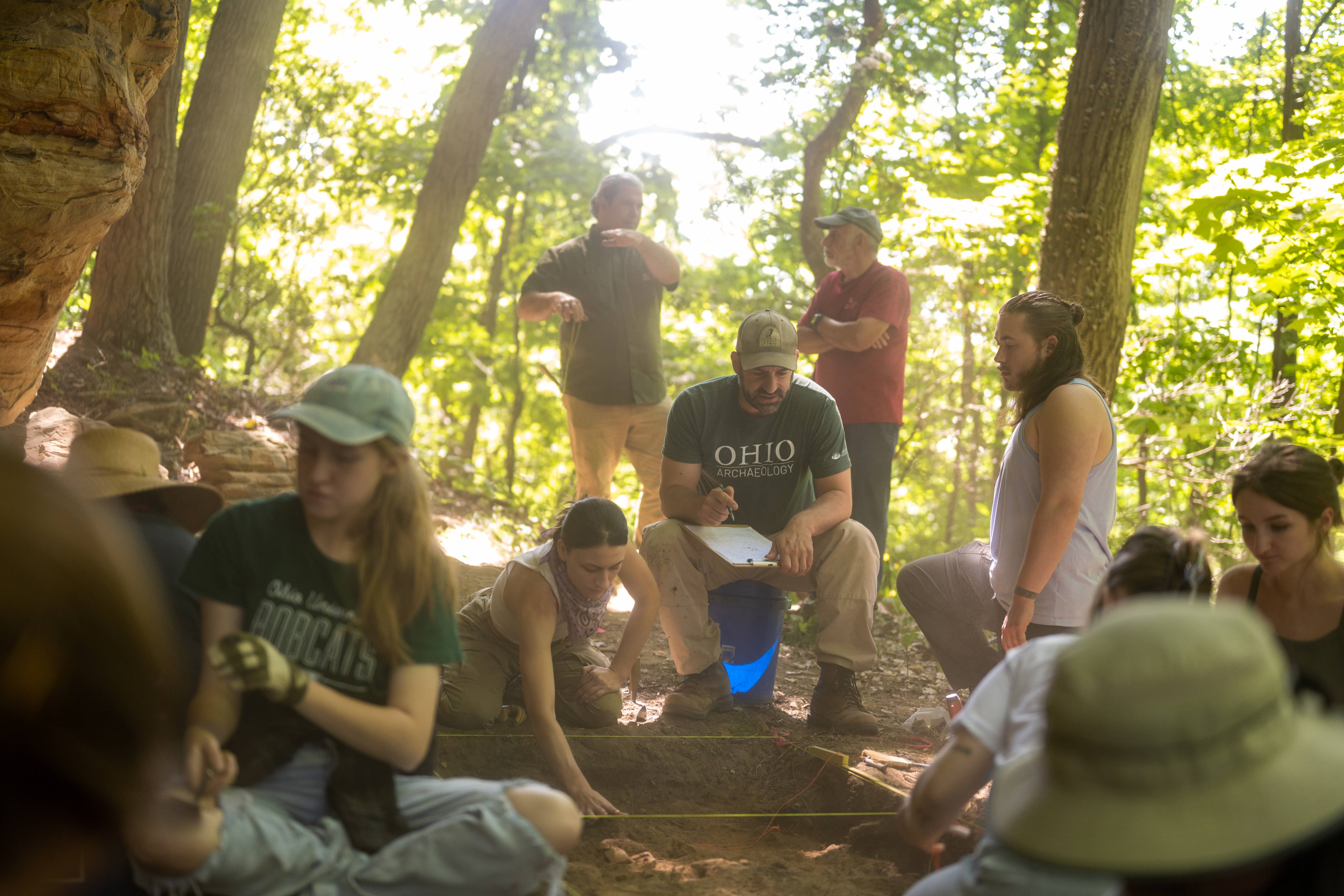Indiana Jones might travel the world in search of ancient artifacts, but Ohio University students are treasuring their own discoveries right here in southeastern Ohio.
Field School in Ohio Archaeology students are spending their summer searching for artifacts from Ohio's first peoples—one square meter of earth at a time.
Anthropology student Carly Wisner thought their archaeological dig this summer would uncover information about Ohio's first farmers, the Adena culture. But she was thrilled when Field School in Ohio Archaeology students also found prehistoric evidence dating all the way back to hunters and gatherers known as the Clovis culture.
"Understanding hunter-gatherers, which the Clovis people were, is central to understanding nearly all aspects of human history and modern society. To understand the origin of agriculture or civilizations, you must understand how they arise, and you need to understand who formed them. The answer to this lies with hunter-gatherers," Wisner said.
Setting up the dig
Wisner's search for answers took place one square meter of soil at a time at the field school run by Dr. Joseph Gingerich , associate professor of anthropology in the College of Arts and Sciences. Gingerich set up the archaeological dig in a rockshelter near Lancaster, Ohio, establishing a fixed reference point and then dividing the site into units.
"The grid is laid with four nails, string, and a metric ruler," said Tim Wamack, who is heading into his junior year as an anthropology major . "Using the Pythagorean theorem, we are able to create a perfect one-meter-by-one-meter square."
Wamack described the shelter's "overhanging rock that acted as a ceiling and roof where previous cultures would make camp and do activities, such as making stone tools or fires. The ground was covered in a sandy soil and a large number of leaves that had fallen in the forested area. Dr. Gingerich explained that a previous shovel test pit, a form of excavation, had yielded some pottery from the Adena culture. The surface also had a large stone that had markings indicting it was used for sharpening stone tools. And on the wall of the rock shelter various forms of carved-in graffiti can be seen, dating from a very wide range of years."
The most common artifact unearthed by the 12 field school students were chert flakes, which Phillip Manley described as "small flint chips that are removed from larger cores in the process of creating stone tools known as lithics. Other artifacts include fire cracked rock, charcoal, groundstone, projectile points, shell and ochre."
"In the moment of discovery, it’s hard to relate a small chert flake to those distant prehistoric people. In the field, you’re so concerned with documenting and storing the artifact that the actual discovery can seem insignificant. It isn’t until later that I realize that I am one of the first people to look upon an artifact since it was first used by an ancient person," added Manley, who is majoring in anthropology with a minor in classical civilization and will be a junior this fall.
Finding two cultures on one site
While the undergraduate students did find lots of Adena artifacts dating to several thousand years old, the big surprise—made by graduate student David Lamp —was a Clovis fluted point likely dating to some of the first people to live in Ohio — around 13,000 years ago at the end of the Ice Age.
"We have found some incredible artifacts during our time at the site!" Wamack said. "Two of the most exciting finds, in my opinion, have been the Clovis point base and the bones of a small size mammal. We have also found an exciting amount of chert flakes from the making of stone tools, shards of pottery, and charcoal."
Finding a fluted point from about 13,000 years ago was something Wisner didn't anticipate. But it was "bounds more impressive," she said.
"It is truly incredible to be working on a paleo site, especially in Ohio. The most supported theory of the colonization of the Americas is that people crossed over the Bering Strait Land Bridge, which would have been located up near Alaska. To find evidence of them in Ohio means that these groups would have had to travel across the country," Wisner said.
"This makes finding paleo sites in Ohio few and far between. Other than the site we are currently at, there is only one other documented paleo site located in a rockshelter in southeast Ohio. We are some of the very few people who have had the opportunity to work on a project like this, which is just incredible," she added.
Field school students will have plenty of time to contemplate their discoveries in Ohio University's archaeology lab. The field school is structured so students learn all aspects of archaeology from finding sites to identifying and classifying artifacts in the lab, Gingerich said.
"I am looking forward to the lab time in this and future courses so I can learn more about how the artifacts are created and how to identify them," Wamack said.
"Being in the field and discovering artifacts is thrilling, but it is only half of the equation. Working in the lab to organize and preserve unearthed artifacts is a tantalizing prospect. There, you can be intimate with the artifacts, deciphering what they say about the people who produced them," Manley added.
Read more about the OHIO students and how they compare to Hollywood's most famous archaeologist
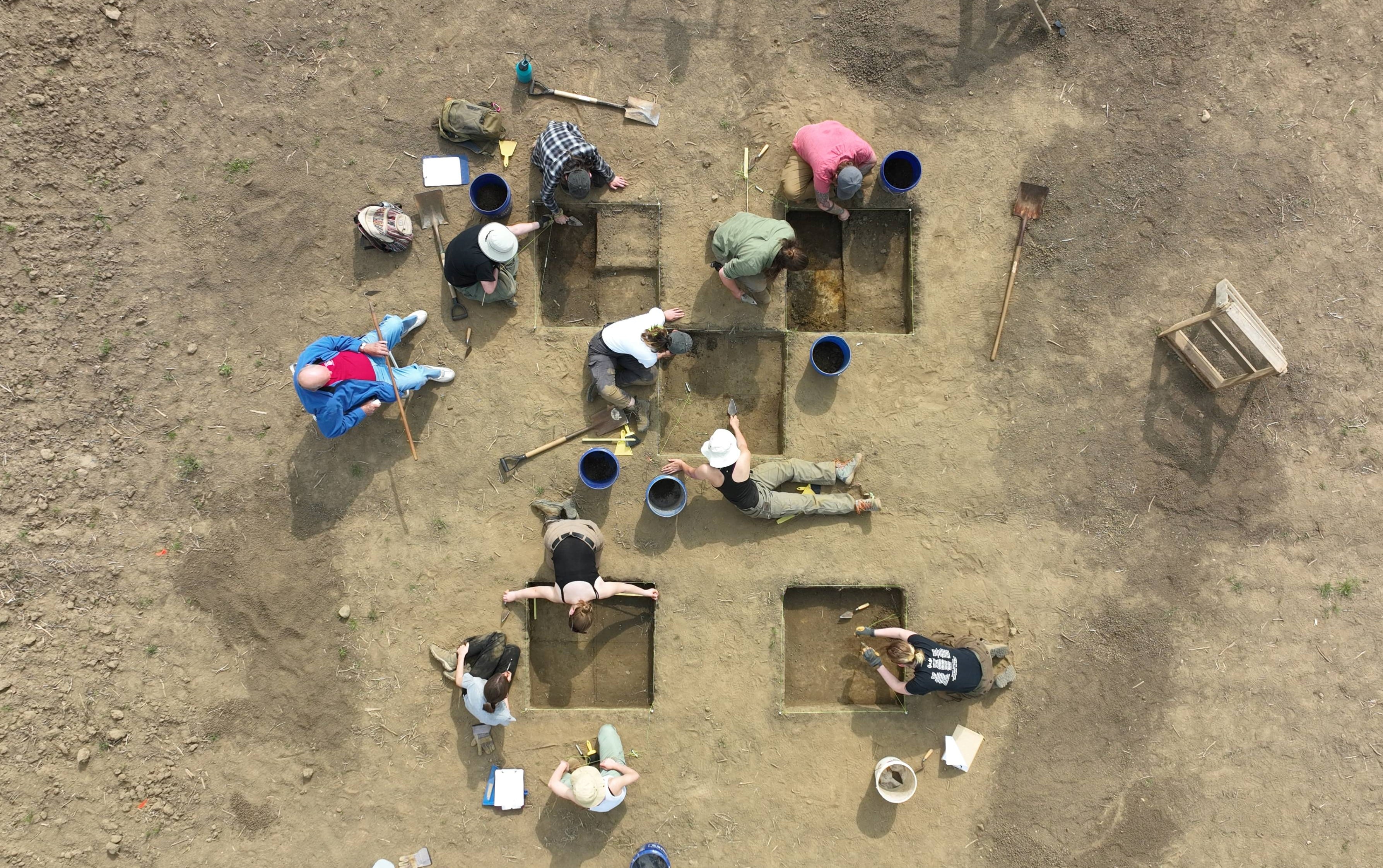
Using math and GIS: The OHIO students used the Pythagorean theorem to create perfect one-meter-by-one-meter square units. They also set up a datum, which is a permanent reference point so researchers can find that exact locations of the test units. Photo by Ben Siegel
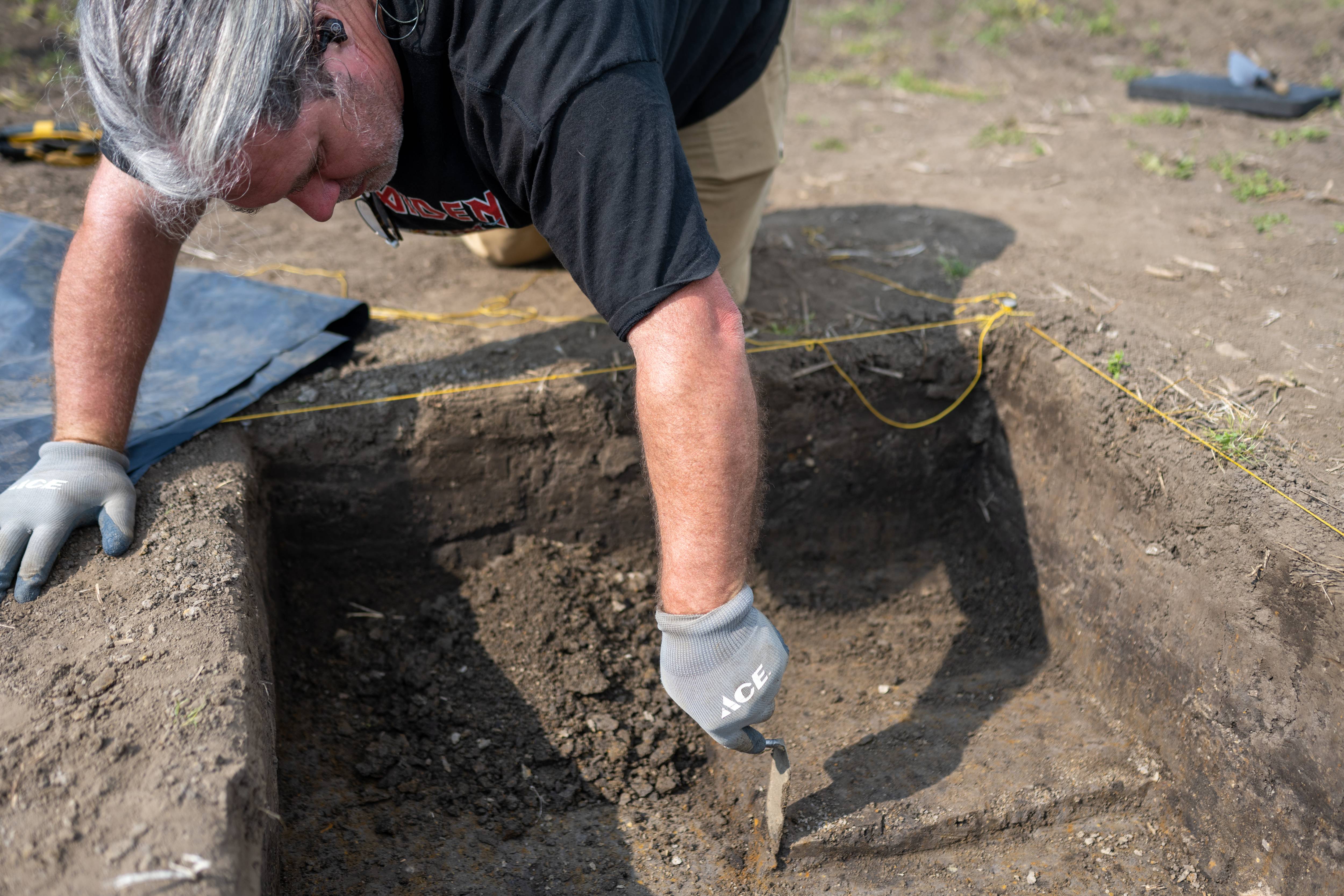
Making amazing discoveries: David Lamp used a trowel to dig layer by layer, where one of his finds was a once-in-a-lifetime Clovis point. Photo by Ben Siegel
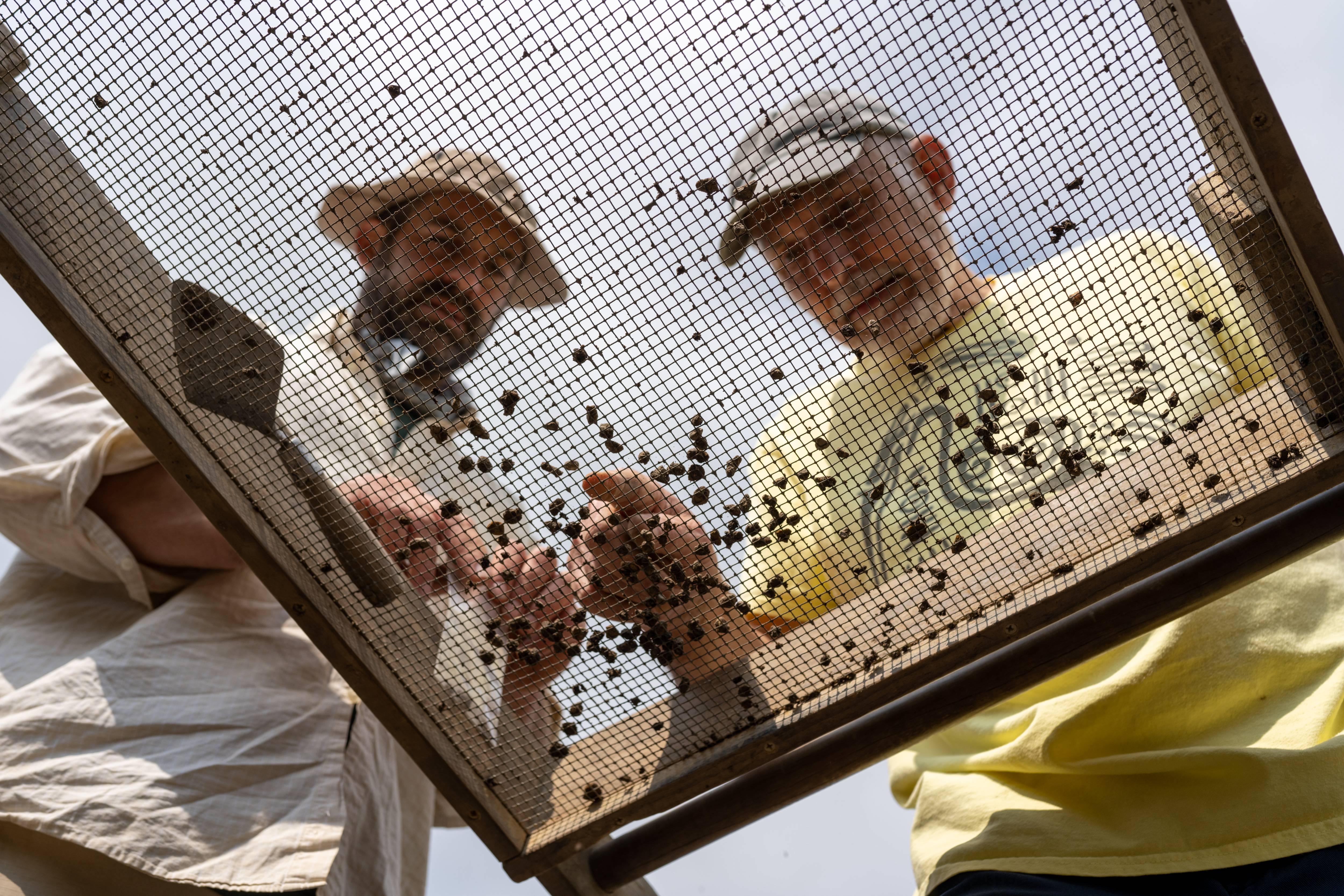
Sifting for archaeological gold: OHIO professor Dr. Joseph Gingerich and retired educator and archaeologist Gary Argabright find plenty of "treasure" in their hunt for answers about the state's first peoples, like chert flakes, pottery shards and charcoal. Photo by Ben Siegel
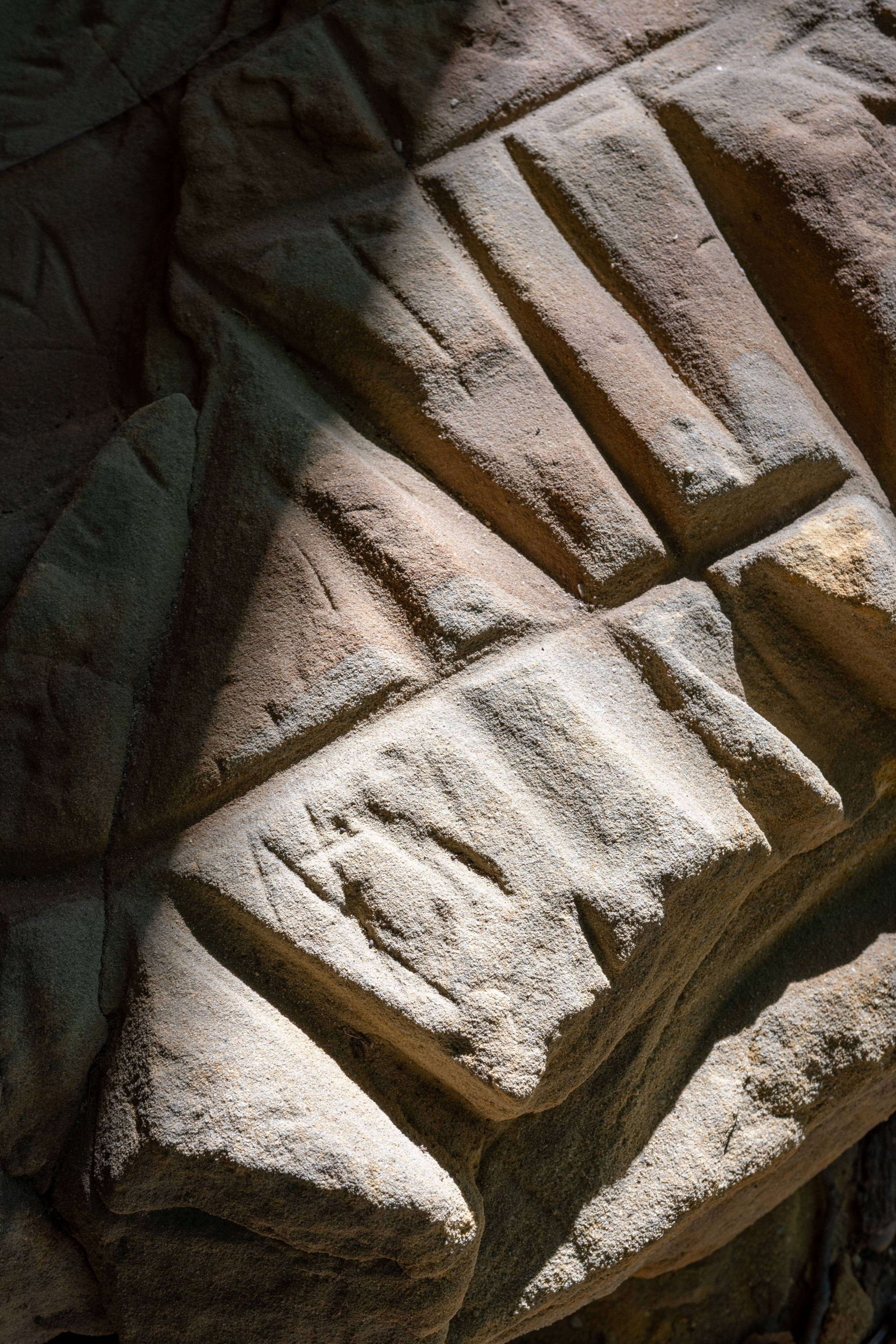
Made by ancient hands: The wall of the rock shelter featured a large stone with grooves used for sharpening stone tools and carvings by ancient Ohioans. Photo by Ben Siegel
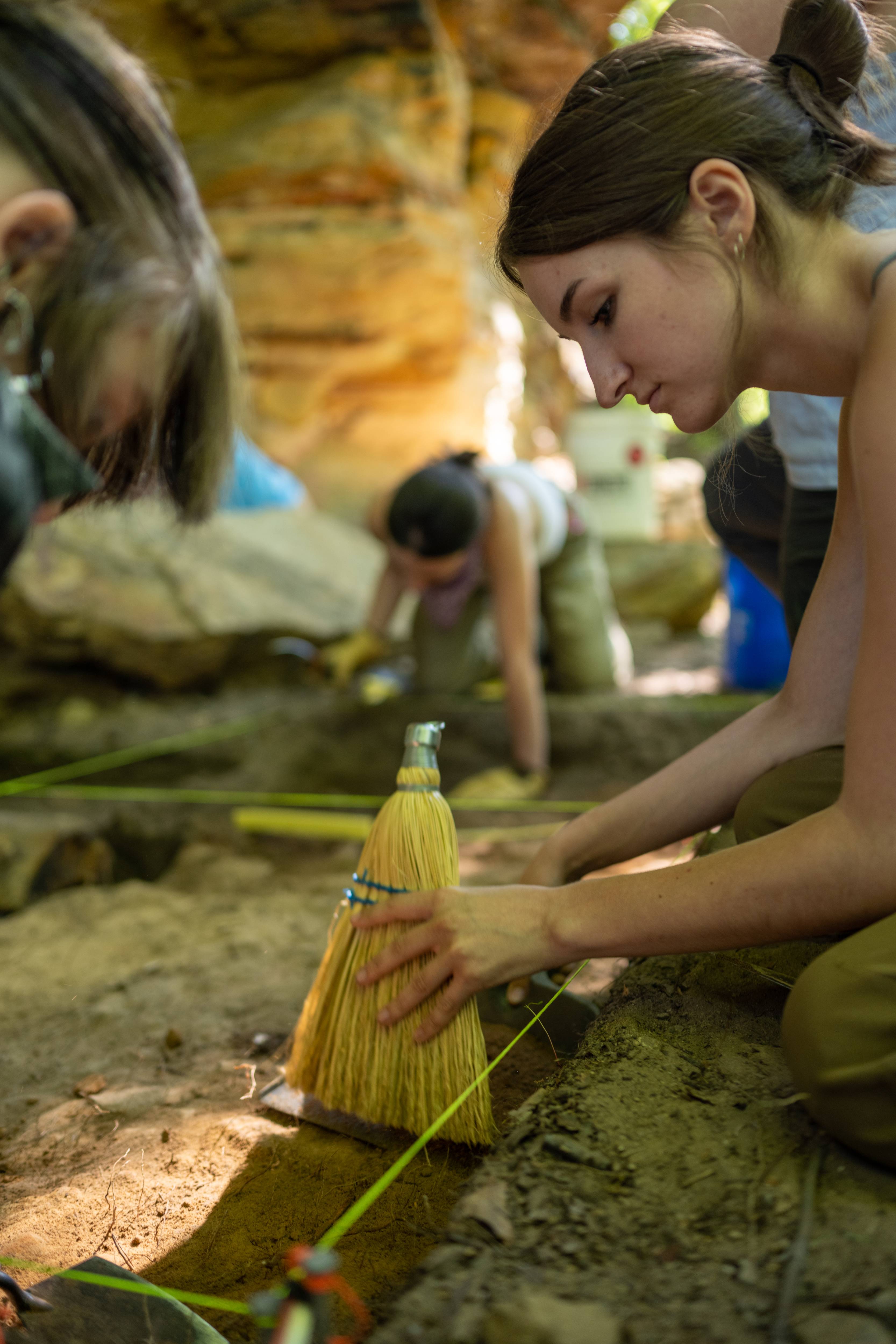
Painstaking work: Students prepared to be uncomfortable for the first half of Field School but found the rock shelter provided much-needed shade. Photo by Ben Siegel
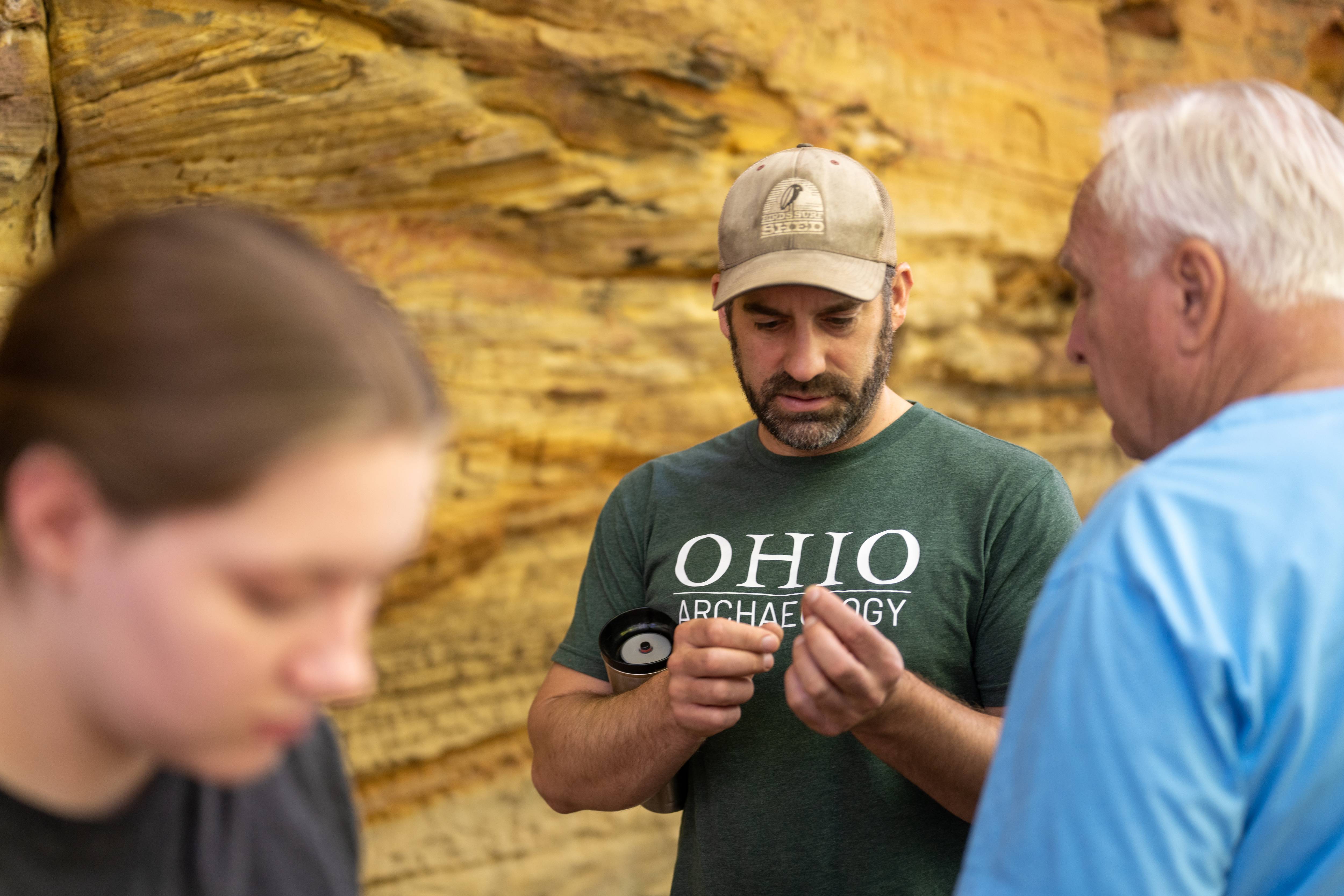
Dr. Joseph Gingerich has been leading anthropology students on digs in southeast Ohio and even to Virginia, discovering new insights into the first peoples who moved onto this continent, likely coming from west to east. Photo by Ben Siegel
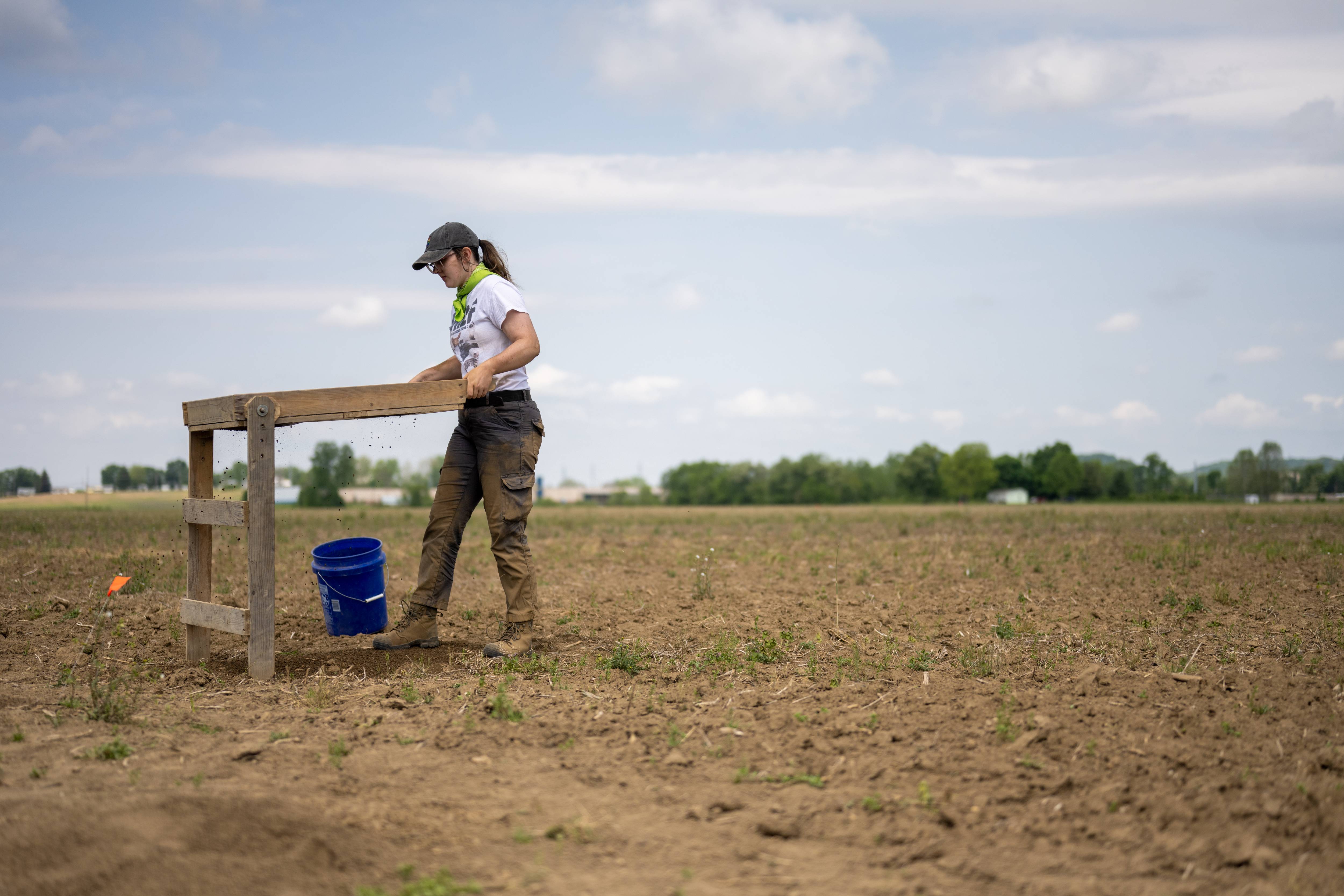
Once hunters and gathers: As glaciers were receding in Northern Ohio, people from the Clovis culture were making fluted points, possibly lashed to spears, to hunt game. Maybe Wooly mammoths once walked here? Photo by Ben Siegel
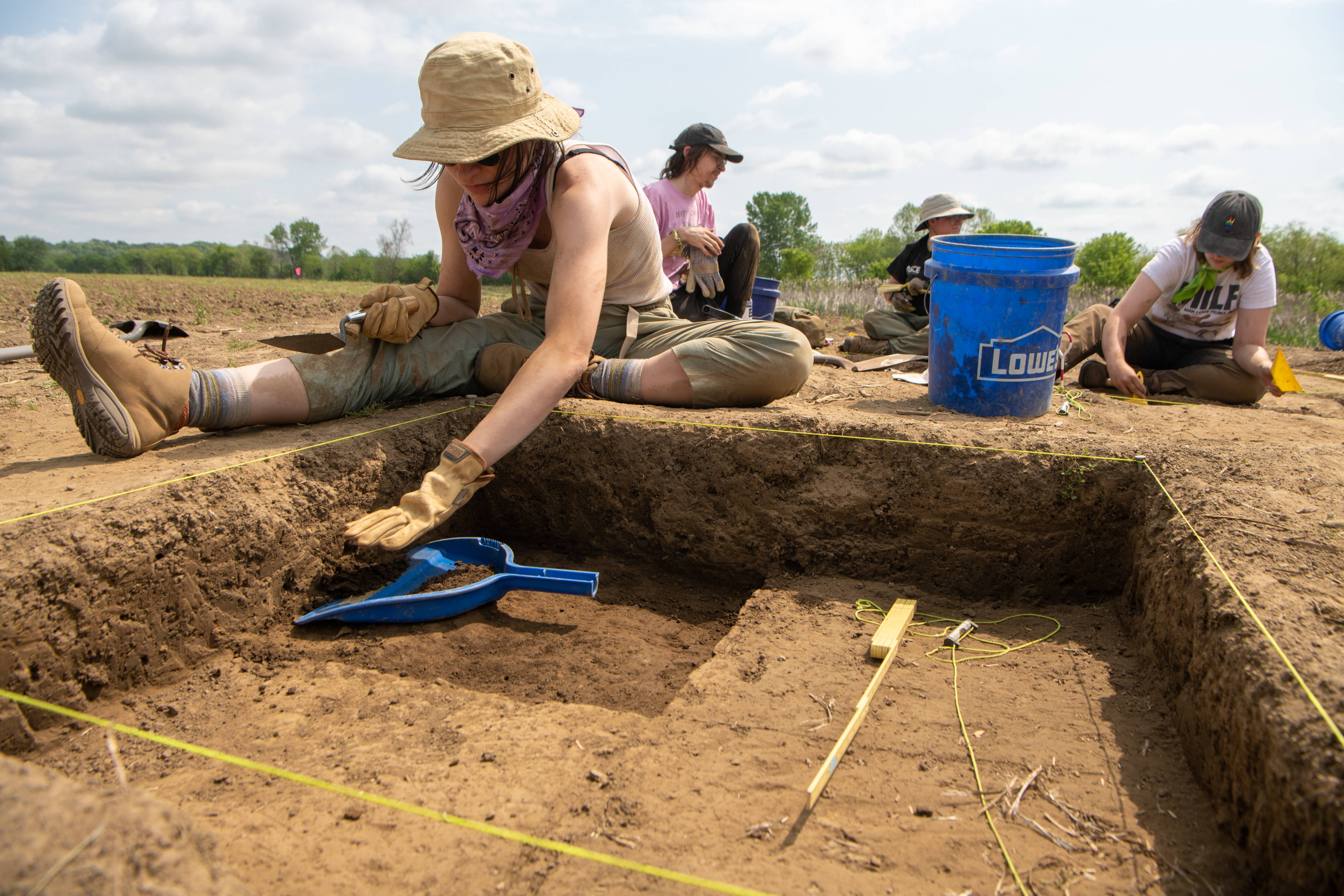
Back through a time: As they dug down, students were traveling back through time layer by layer--through dirt older than the pyramids in Egypt. Photo by Ben Siegel
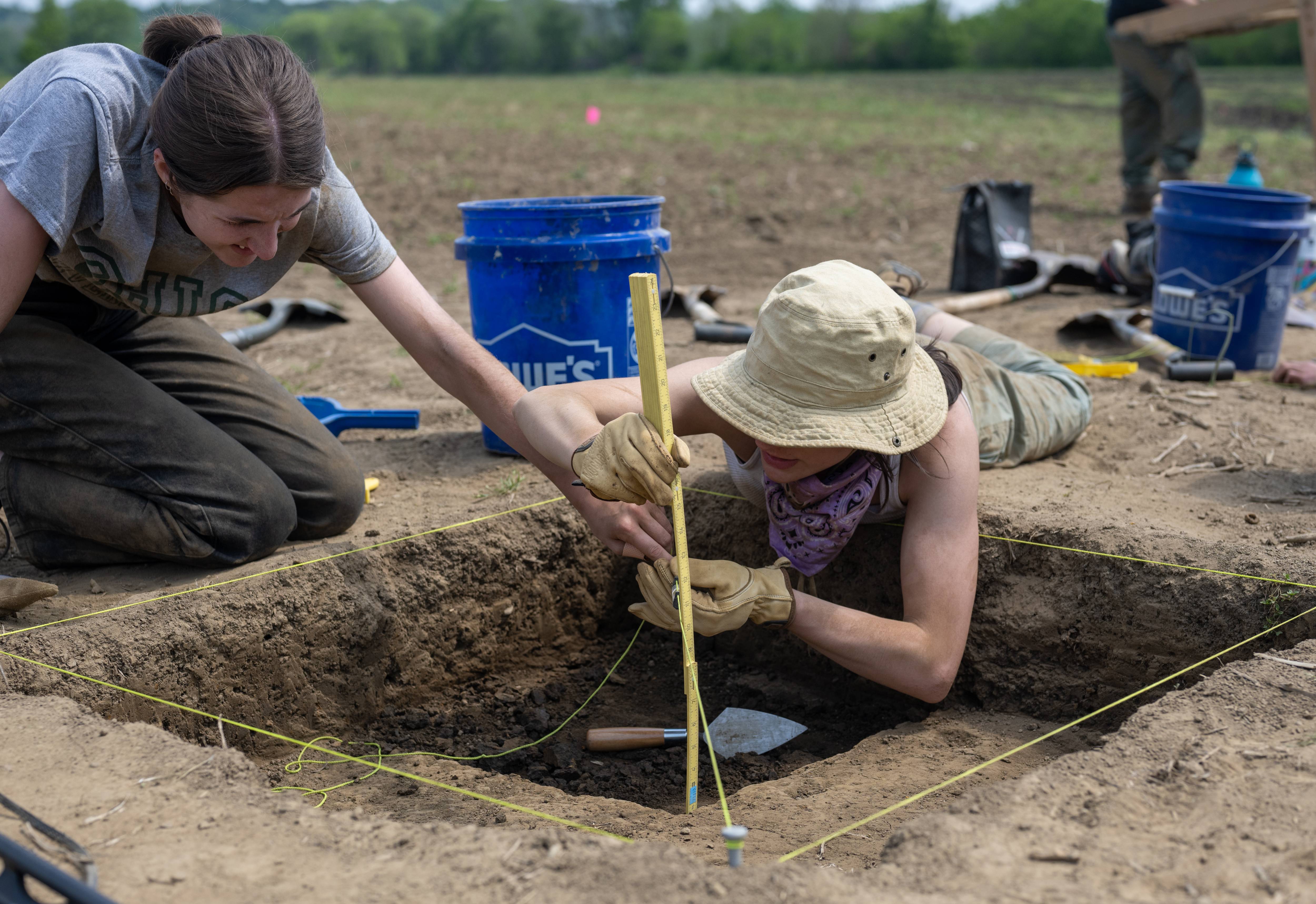
Cultural layers: Students at this year's Field School found artifacts from two very different cultures--one of them 13,000 years old--buried just beneath today's farmland. Photo by Ben Siegel
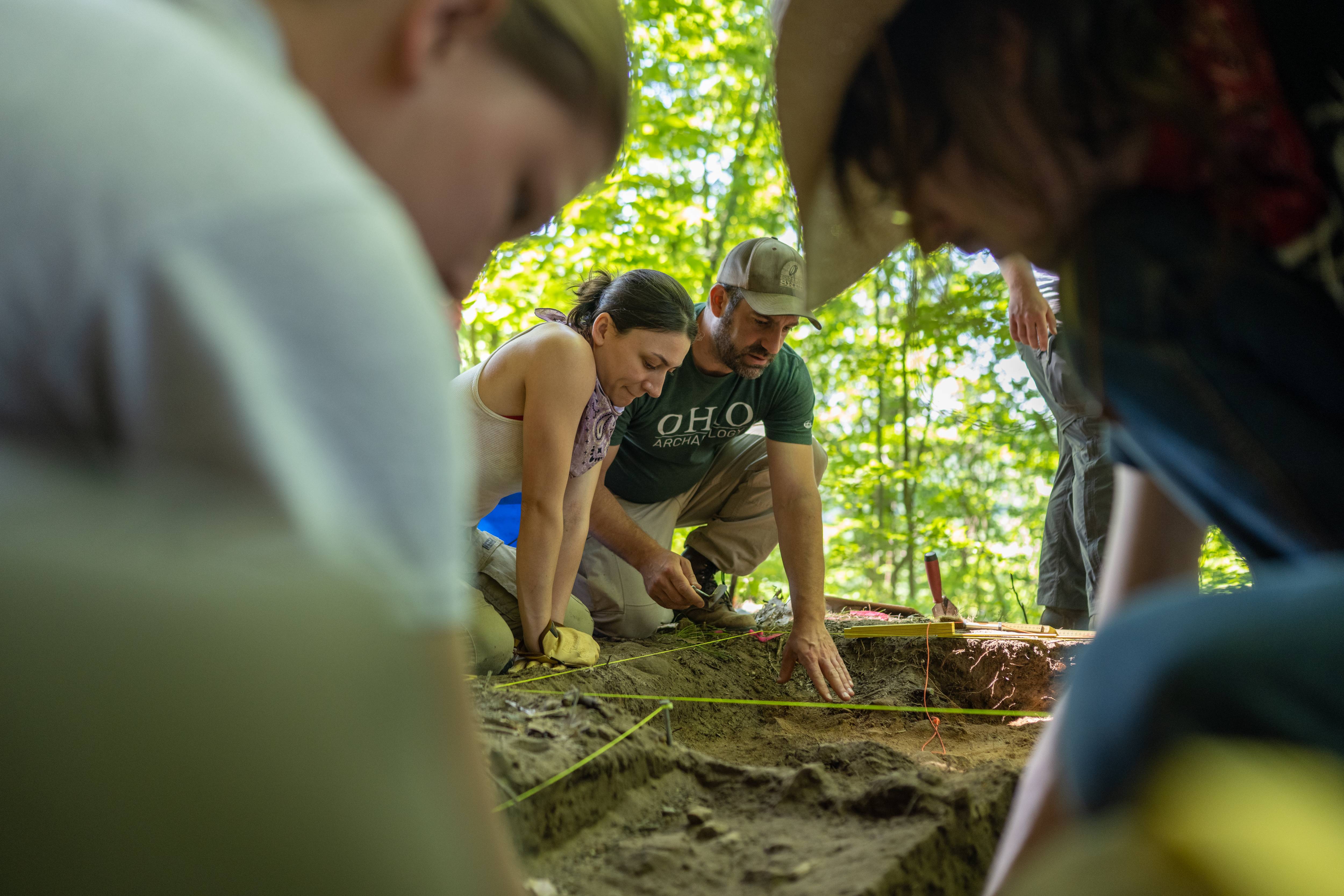
Dr. Joseph Gingerich and students found more evidence to show that "Ohio is home to some of the oldest known evidence of people in North America," he said. Photo by Ben Siegel
Archaeology @OHIO: It's not like the movies, but then ...
Twelve students in Ohio University's Field School in Ohio Archaeology , are having their own blockbuster summer, Indiana Jones-style. Here are a few similarities and differences between the OHIO students and the Hollywood hero.
Indiana Jones spends time in plenty of caves and underground.
"I was expecting something cave-like, but in reality, it was a tall rock structure with a slight overhang," says Carly Wisner.
Indiana Jones knows a lot about the ancient artifacts he's searching for.
"I’ve taken three classes with Dr. Gingerich, Intro to world archaeology, North American Prehistory, and archaeology of foraging societies," Phillip Manley notes.
Some of Indiana Jones' artifacts take at least two hours to track down.
"Almost immediately in our first level of excavation (about 5 centimeters), we found flakes from flint knapping activity," reports Tim Manley.
Indiana Jones wears a cool hat.
"To prepare for field school I purchased outdoor pants, shirts, boots, and a few different hats," Wamack says.
Indiana Jones chases after ancient historical treasures.
"The projectile point found we is a fluted point which is diagnostic of Clovis, somewhere around 12,600 years ago," Wisner explains. (That's prehistoric!)
Indiana Jones is often injured during his adventures.
"Everyday I find that I’m trying to contort my body into odd angles to dig a certain part of my unit. In some ways it’s very uncomfortable," Manley adds.
Indiana Jones has a sidekick and a costar.
"Making new friends in the field environment has made a lot of the challenging work easier," says Manley.


